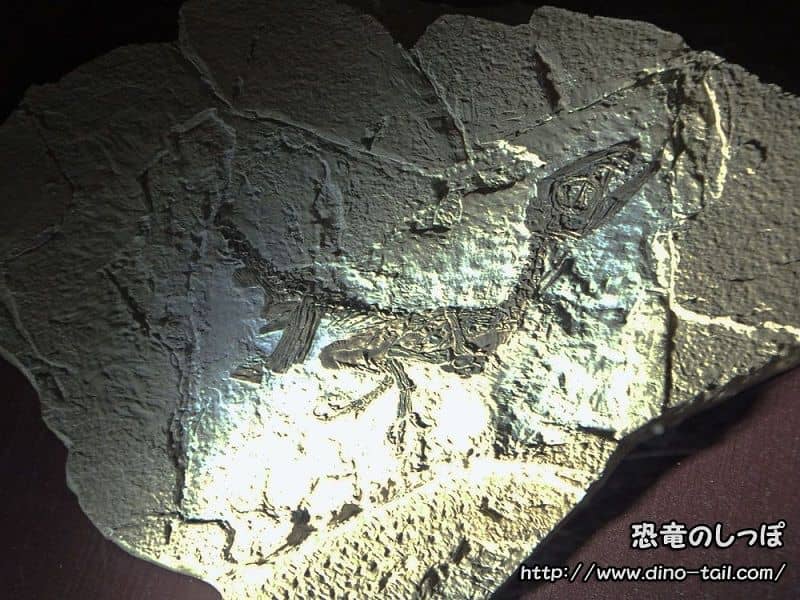About Scipionyx
| Scientific Name (Genus) | Scipionyx |
| Meaning of Name |
Scipio's claw (after the famous Roman general)
Scipio (personal name) - onyx (claw) [Greek] |
| Classification | Saurischia, Theropoda (Compsognathidae) |
| Total Length | Approx. 2m |
| Diet | Carnivorous |
| Period | Early Cretaceous |
| Species | Scipionyx samniticus |
| Year of Paper Publication | 1998 |
| Description Paper |
Scipionyx samniticus (Saurischia, Theropoda): the first Italian dinosaur.
Third European Workshop on Vertebrate Paleontology, Abstract: 23. by Dal Sasso, C. and Signore, M. 1998. |
Features

It is estimated to be a juvenile, a few days old.
Scipionyx was a dinosaur that lived in Italy during the Early Cretaceous. Although no feather impressions were preserved in the discovered fossil, it is likely that its entire body was covered in feathers, based on comparisons with its close relatives.
Only one fossil has been discovered so far, but it is estimated to be not an adult but a newly hatched juvenile (about a few days old). At a few days old, its body length was about 50 cm, and it is thought that it would have grown to about 2 meters as an adult.
Soft Tissue Preserved in the Fossil: A Dinosaur 'Anatomy Chart'

The reason the Scipionyx fossil is called a 'miracle' is that not only the bones but also the soft tissues (internal organs and muscles) , which are not usually preserved as fossils, were amazingly preserved by being replaced with the mineral calcium phosphate. A detailed study published in 2011 revealed numerous facts about the internal structure of dinosaurs.
Revealed Internal Structures
- Digestive tract: The stomach, duodenum, and a surprisingly short intestine were identified. This suggests that Scipionyx had a very efficient digestive system.
- Liver: The outline of a huge liver was clearly preserved as the red pigment hematite.
- Muscles and cartilage: Muscle fibers in the neck and chest, and even joint cartilage, were preserved.
- Yolk sac: Traces of the 'yolk sac,' which newly hatched chicks absorb for nutrition, were found, confirming that this individual was a baby only a few days old.
- Respiratory system: A structure was found at the position separating the lungs and liver that may have been part of a unique dinosaur respiratory system, different from both the crocodile-like diaphragm and that of birds, and is still being debated.
The Last Supper and Parental Care
Inside the digestive tract, the 'last supper' of lizards and fish was preserved.
In the stomach, a 3 mm wide metatarsus consisting of five metatarsals, an ankle, and caudal vertebrae were found. It is estimated to be from a lizard 15-40 cm long. In the duodenum, there was a mass of scales from another lizard, and further down, fish vertebrae were preserved. These fish vertebrae are thought to be from a clupeomorph. In the rectum, fossils including the skin of an osteoglossomorph fish were preserved.
Since it is unlikely that a baby a few days old could have caught such a variety of prey on its own, this is considered very strong circumstantial evidence that the parents brought it food and cared for it (parental care).
The Story of the Discovery: The Journey of 'Ciro'
There is a strange story behind the appearance of this amazing fossil on the scientific stage. In 1981, an amateur fossil collector named Giovanni Todesco discovered this fossil in a limestone quarry in southern Italy. At first, he thought it was a bird fossil, but realizing its importance, he entrusted it to experts.
This little baby dinosaur was given the nickname 'Ciro,' a dialect of the Naples region. Even after it was formally described in 1998, this fossil has continued to attract the attention of researchers around the world and is still being studied as a unique 'time capsule' for unraveling the biology of dinosaurs.
